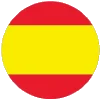
 ENGLISH
ENGLISH
 ENGLISH
ENGLISH


If there is an uncomfortable truth, it is the truth of death. At present, it seems to be postponed. We take it for granted but, at the same time, it seems distant, remote, incomprehensible. During the Middle Ages, they performed a dance, called precisely the dance of death, to exorcise the fear of the beyond. It was a euphoric celebration, a catharsis, with jerky disjointed movements and forceful shaking. Today, is it possible to return to the idea of mediaeval release, to come to terms with finiteness and celebrate it once again, where new and decidedly contemporary forms have been adopted, such as parades, photocalls, dance halls, and raves?
Marcos Morau, who founded La Veronal in 2005 and was a National Dance Award recipient in 2013, believes this test of fire is possible by embracing ritual to face the end of life and return to these eternal questions that the world has asked itself, nearly since its origins: who we are, where we are going, what this place we inhabit means.
For his new performance, TOTENTANZ – Morgen ist die Frage, a non-theatre space was selected – the Museo Nacional Centro de Arte Reina Sofía – where the stage conception of La Veronal will be shaped, an amalgamation between dance, image, literature and music. In the three spaces created in Totentanz: one for video projection, another for the installation, and the third for a performance, the viewers are involved from the outset in a sort of spiritual session, ‘disturbing yet ridiculous’, as Roberto Fratini defines it, author of the dramatic composition of the piece.
During the session, the bodies ‘seem to speak to us from the furthest limits of the world’. The journey starts there, putting the eternal dilemma that separates life from death into conflict. This is allegorically embodied by two inert and skeletal bodies. ‘One could think – explains Marcos Morau – that they have more clues about the great beyond, like they visited it often. Or perhaps they are only two puppets, two figures frozen under the infinite winter of Mother Death.’ Like mediaeval dances, these new versions revive the shaking of bodies, which are lost in the darkness of the senses and succumb to the trance of the music and the dancing that leads to catharsis.
More than five centuries later, the dance of death is back to beckon to human beings. ‘Our Totentanz,’ states Morau, ‘is nothing more than an invitation to celebrate the fragility of life and to meditate on its loss of value. The current disdain for life’s values is directly proportional to the widespread inability to perform, dance and officiate death as a mystery.’